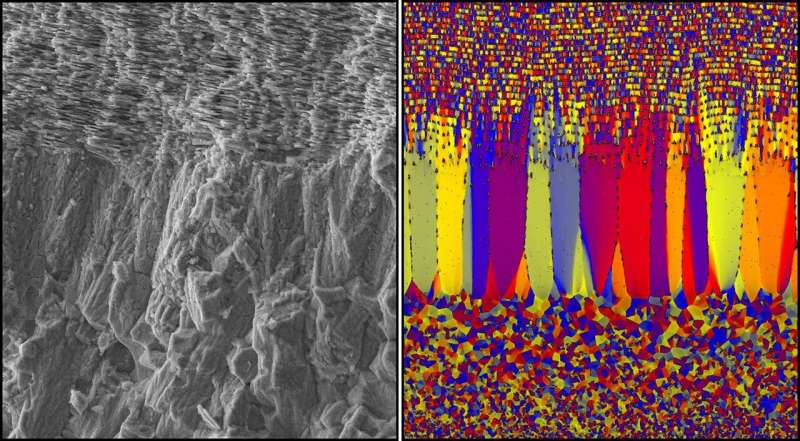Crystal growth kinetics and its link to evolution: New findings about biomineralization in molluscan shells

The research group of Dr. Igor Zlotnikov from the Center for Molecular Bioengineering (B CUBE) of TU Dresden demonstrate in its latest publication that the physics of materials has a strong impact on the possible structures that molluscan shells can produce. This research shows how fundamental physical laws, such as crystal growth kinetics and thermodynamics, can constrain the outcome of evolution and helps explain why we see the repeated development of certain structures through deep time.
Molluscan shells consist of a variety of complex mineral-organic composite ultrastructures. Surprisingly, in some cases, shells from distantly related species contain similar morphological motifs on many different length scales, from the nano- to the micro-scale. During the last few decades, significant progress has been made in understanding the key biochemical mechanisms responsible for biogenic mineral formation. However, little is known on how the organisms control the form of the individual mineral building blocks comprising the different shell architectures and consequently, determine the morphology of these species-specific mineral-organic assemblies.
The Zlotnikov research group in collaboration with scientists from the Wigner Research Centre for Physics in Budapest, Hungary now developed a comprehensive experimental and theoretical framework to analytically describe the process of ultrastructural morphogenesis of molluscan shells. Mainly, they demonstrated that the formation of these highly biomineralized tissues is guided by the organisms by regulating the chemical and physical boundary conditions that control the growth kinetics of the mineral phase.
By showing a direct link between physics of materials and the process of biomineralized tissue morphogenesis, the team sheds a new light on the evolutionary aspect of the fabrication of biological materials.
The study is published in PNAS.
More information: Vanessa Schoeppler el al., "Crystal growth kinetics as an architectural constraint on the evolution of molluscan shells," PNAS (2019). www.pnas.org/cgi/doi/10.1073/pnas.1907229116
Journal information: Proceedings of the National Academy of Sciences
Provided by Dresden University of Technology


















